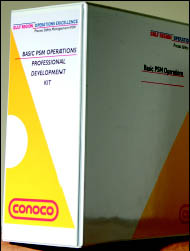 |
| Performance Consulting | Marketing and Communications | Methods, Tools and Software |
|
© Daniel Follette, Inc. 2025
|
|
|
Business technology has evolved explicit and complex systems for managing. It falls short in the way it defines exactly what is being managed. Most descriptions—if they do represent something that can be measured—are high-level indices such as sales volume or production output. These are important and necessary indicators for executive overview. They can tell if aggregate performance is meeting expectations. But indices provide little diagnostic information because they generally do not point to the specific behaviors that produce the described outcome. Successful line management must be able to identify and direct the mechanism that produces the outcome. Most companies do not have that information in a useable form. Strategic repertoires provide explicit information about the performances that produce value and the necessary skills for successful performance. [See the Strategic Repertoire Development™ section of the performance Web site for more information on this topic.] Other descriptions are generally aggregations of activity—aggregates such as the volume of clerical work, engineering or bookkeeping as represented by head counts or hours. The problem is that aggregation by activity makes no link between activity and result. A manager probably couldn’t accurately say "if we add X percent to our clerical (or engineering) staff we will get Y increase in production." Over the years, companies have found rule-of-thumb relations between some kinds of input and output. Budget planners may be able to say, "if we add 20 percent to our machinist pool, we can increase output by 15 percent." This, however, only manages by regulating input. More often the issue is how to increase output by 20 percent with no increase in input. To do this you have to describe and manage the explicit way that inputs produce result. You must define the exact tasks being performed, the standards for performance and precise skills that make that performance possible. Precise descriptions of performance are important to employees. If performance expectations do not link individual actions with the result being measured, employees will not see how they can affect the result. In this case, positive results become a matter of chance. As the Duke of York (and a number of other Shakespearean characters) said, "things past redress are with me past care." |
|
case
studies resources clients |
